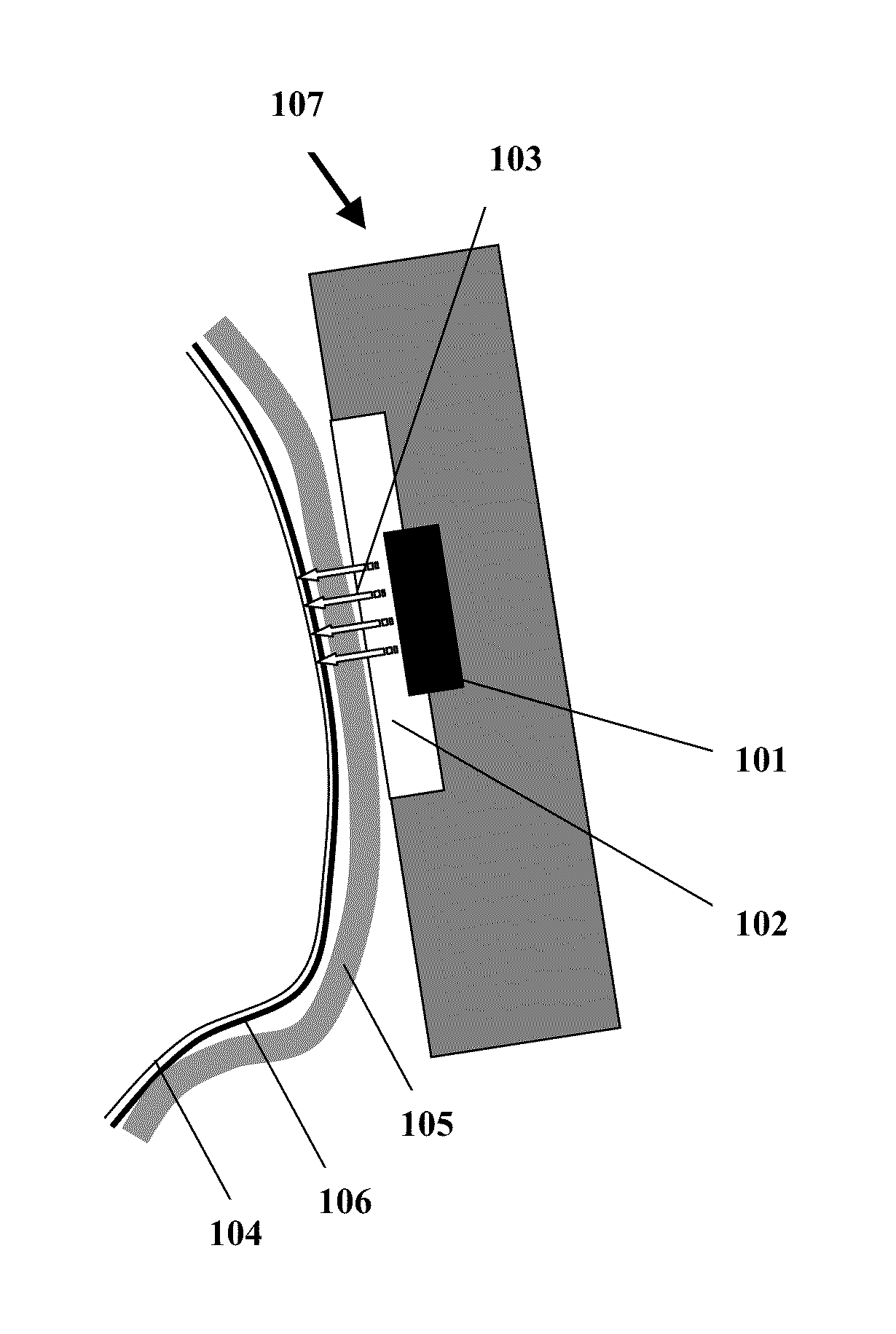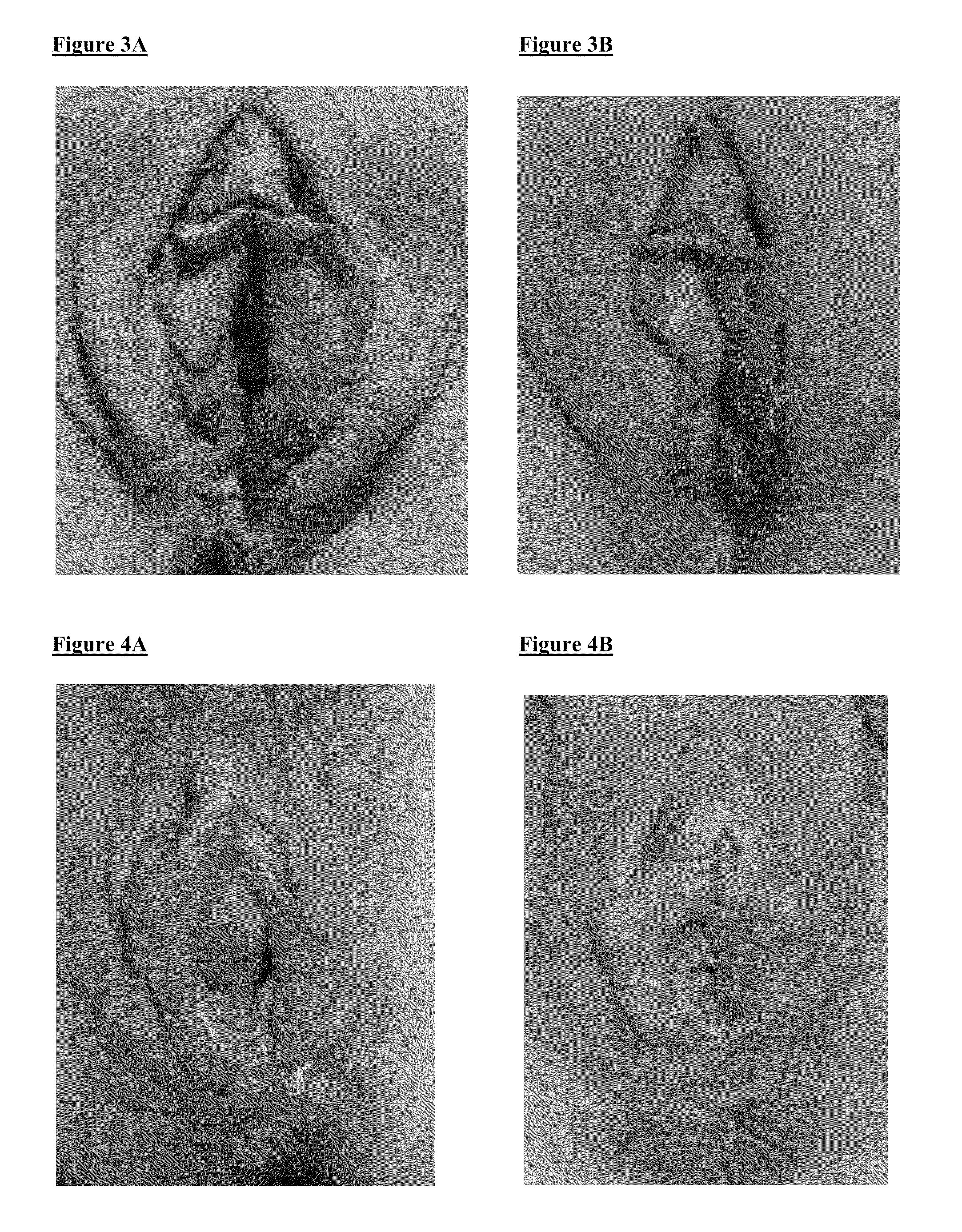Correction of female urinary incontinence and skin reduction
a technology for genital skin and correction, which is applied in the field of female genital skin reduction, can solve the problems of urinary incontinence, urine can leak, and the pelvis muscles are weak, so as to reduce the severity of and/or improving a condition in a subject, and reduce the likelihood of developing
- Summary
- Abstract
- Description
- Claims
- Application Information
AI Technical Summary
Benefits of technology
Problems solved by technology
Method used
Image
Examples
example # 1
Example #1
Treatment of Stress and Mixed Urinary Incontinence
[0107]One application of a method of the present invention encompasses the following six treatments: labia majora reduction; labia minora reduction; clitoral hood reduction; periurethral reduction; vaginal introitus reduction and perineal reduction. Implementing all six of these treatment areas collectively may be used to treat stress urinary incontinence (“SUI”). The treatments performed on the six areas listed above are usually performed in the order listed, but may nonetheless be effective if performed in no particular order. It is the collective reduction of the six areas of the female external genitalia that results in treatment of the symptoms of SUI, in connection with this example.
[0108]The number of treatments needed to treat symptoms of SUI to the patient's satisfaction will vary according to the severity of the symptoms, age of the patient and the degree of laxity. The treatments typically take approximately 75 m...
example # 2
Example #2
Treatment of Anal Incontinence and Rectal Prolapse
[0144]Using the methodology of the present invention anal incontinence and rectal prolapse can be treated by the reduction of a seventh anatomical area of the female external genitalia; that is, the anal and peri-anal area. There is a standard procedure that is unique to this area.
[0145]At block 24 reductions of the anus and peri-anal tissues are performed by placing a patient in the dorsal lithotomy position followed by McRoberts position on an examining table with stirrups designed for gynecologic examinations. Next, using current medical guidelines from the American College of Obstetricians and Gynecologists for positioning a female patient for a gynecologic exam, the patient is positioned for optimal visualization of the treatment area, guiding the knees apart and the pelvis superiorly using a wedge lift as needed. Begin laterally on either side of the anus and include all peri-anal skin inferior to the coccyx. With glo...
example # 3
Example #3
Treatment of Vaginal Wall / Vaginal Vault Prolapse
[0149]Using the methodology of the present invention vaginal wall prolapse and vaginal vault prolapse can be treated by the reduction of an eighth anatomical area of the female genitalia; that is, the vaginal walls. There is a standard procedure that is unique to this area.
[0150]At block 26 reductions of the vaginal walls are performed by placing a patient in the dorsal lithotomy position followed by McRoberts position on an examining table with stirrups designed for gynecologic examinations. Next, using current medical guidelines from the American College of Obstetricians and Gynecologists for positioning a female patient for a gynecologic exam, the patient is positioned for optimal visualization of the treatment area, guiding the knees apart and the pelvis superiorly as needed. Begin treatment at any location within the vaginal vault, continuing circumferentially 360 degrees to complete one full pass. With gloved hands skin...
PUM
| Property | Measurement | Unit |
|---|---|---|
| skin depth | aaaaa | aaaaa |
| skin depth | aaaaa | aaaaa |
| skin depth | aaaaa | aaaaa |
Abstract
Description
Claims
Application Information
 Login to View More
Login to View More - R&D
- Intellectual Property
- Life Sciences
- Materials
- Tech Scout
- Unparalleled Data Quality
- Higher Quality Content
- 60% Fewer Hallucinations
Browse by: Latest US Patents, China's latest patents, Technical Efficacy Thesaurus, Application Domain, Technology Topic, Popular Technical Reports.
© 2025 PatSnap. All rights reserved.Legal|Privacy policy|Modern Slavery Act Transparency Statement|Sitemap|About US| Contact US: help@patsnap.com



